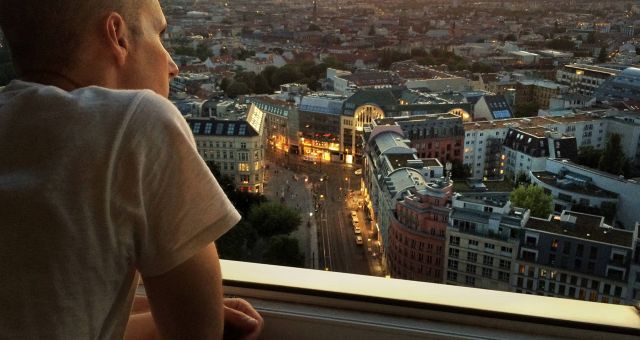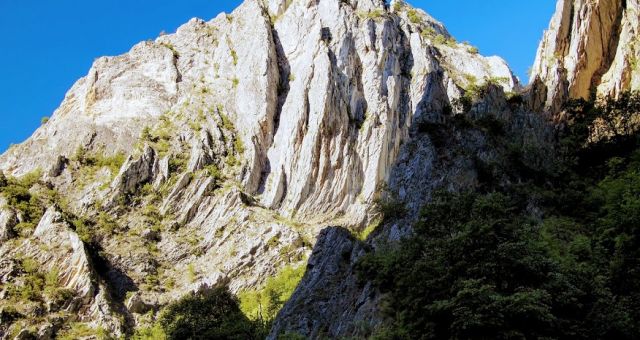There are countries that I dream of visiting, the ones that I read and daydream about because maybe sometime, somewhere a picture caught my attention. And then there are the others. Countries that I visit because they’re… there.
Macedonia and Kosovo belong to this latmter category. They came into my travel rada during our stay in Bansko, Bulgaria for a few reasons:
1. Macedonia was only 1 hr drive away to where we were staying.
2. We had such a great time traveling in ex-Yugoslavia countries last year: the people were friendly, the scenery was beautiful, and the history fascinating. I wanted to see more.
I looked into getting to Macedonia by public transportation. However, after spending a few hours researching bus schedules, I threw up my hand in defeat and decided that renting a car is the way to go. Lack of direct connections from Bansko and infrequent departures would mean adding 3 days of travel (of detour and overnight stays in Sofia) to the itinerary I had in mind.
Renting a car in Bulgaria (a EU country) and taking it across the border to Macedonia and Kosovo (both non-EU) meant getting separate insurance cards (green cards) for each country. Our rental car agency sold us the insurance card for Macedonia and we bought the one for Kosovo at the border.
Other than that minor logistic, border crossing was uneventful, albeit slow.
After a few hours drive, we arrived at our Airbnb which is right at one end of Skopje’s pedestrianized city center.
What’s Skopje like?
I’m not one for mincing words. Skopje is an odd city and we’ll always remember it by how unusual its city center is.
The main square of Skopje has the oddest collection of monuments and statues I’ve ever seen. There’s a giant Alexander the Great statue riding a horse perched on a column in a fountain surrounded by 8 water-spouting lions. Eight lions. Incredibly, this most over-the-top, 8 million euros, monument has the most generic name: “Warrior on a Horse”.
(Macedonia has been in dispute with Greece over the name ‘Macedonia’ and the right to claim Alexander the Great as national hero. The “What’s in a name feud?” is yet another reason we found this region fascinating.)
Along with this giant erection, there’s Porta Macedonia that looks like a miniature Arc du Triumph – as well as statues and monuments of various colors, sizes, and styles. Even the bridges are lined with statues. Because… why not?
Warrior on a Horse
Alexander the Great statue in Skopje
Skopje main square
Beautiful river front
Various statues in Macedonia capital
Statues on a bridge
Another bridge. Notice the statues on top of the building in the back?
Paris? Nope, Skopje! Porta of Macedonia
Walking along Vardar River one afternoon I noticed a large boat. Upon closer inspection, I noticed that it was a fake boat anchored with cement blocks to the river bed (I wonder what happens if the water level rises?). And it’s actually a restaurant! Which is cute if you’re into that kind of thing. We noticed there were 2 more of these boats being built. I guess the first one must’ve been a huge success?
A fellow traveler described Skopje as a “a city of kitsch” and I could totally see his point. It’s like the country is still trying to find its national identity and this crisis is somewhat reflected in this urban development.
On the other side of the Vardar River is a collection of museums housed in stately buildings. The only one we went to was the The Museum of the Macedonian Struggle that’s supposed to tell the story of how Macedonia came to be. The museum had potential (if you’re into wax figures), but the guided tour could do some work. I felt I learned a lot more googling on my phone and the endless wax figures started to look the same after awhile.
Ok, what else is there in Skopje besides sculptures, fake boats, and museums? Well, the Turkish quarter in Skopje is characterized by its 2 story ottoman style buildings and minarets, which offers lots of opportunities to try Turkish food and drink tea.
Turkish quarter in Skopje
Old Turkish hammam turned into museum
Old meet new
We also spent a few hours exploring Kale Fortress that has a nice view overlooking the town center.
View of Skopje center from Kale Fortress
Partly destroyed in an earthquake in 1963, the fortress has just been recently undergone a reconstruction effort.
Kale means “fortress” in Turkish. So Kale Fortress literally translates to “fortress fortress”.
I always have a spot spot for the odd and the weird.
So despite (and a little bit because of) the kitschi-ness of it, we enjoyed our time in Skopje. It’s a modern city with clean, pedestrianized area, with lots of food options. It’s definitely worth a visit when in Macedonia.
Looking for a day trip from Skopje? Matka Canyon, a short drive away from Skopje was a highlight of Macedonia for us. This tour from Skopje takes you to the canyon as well as the Millenium Cross.


